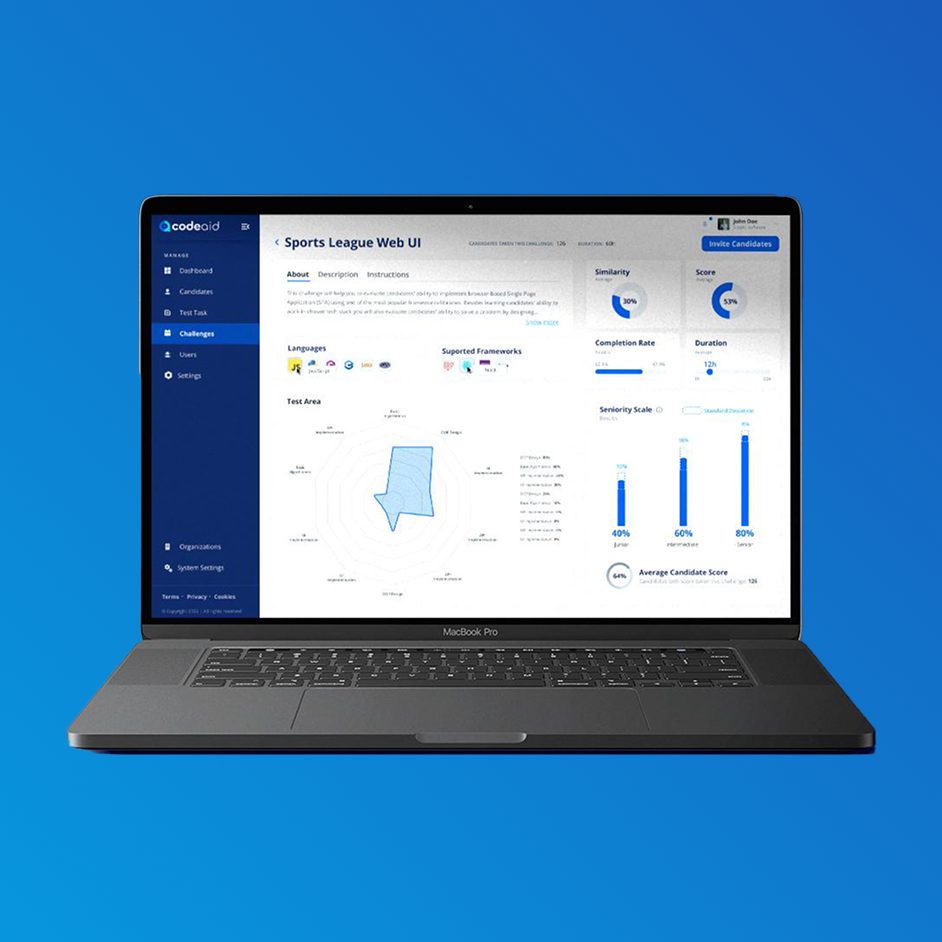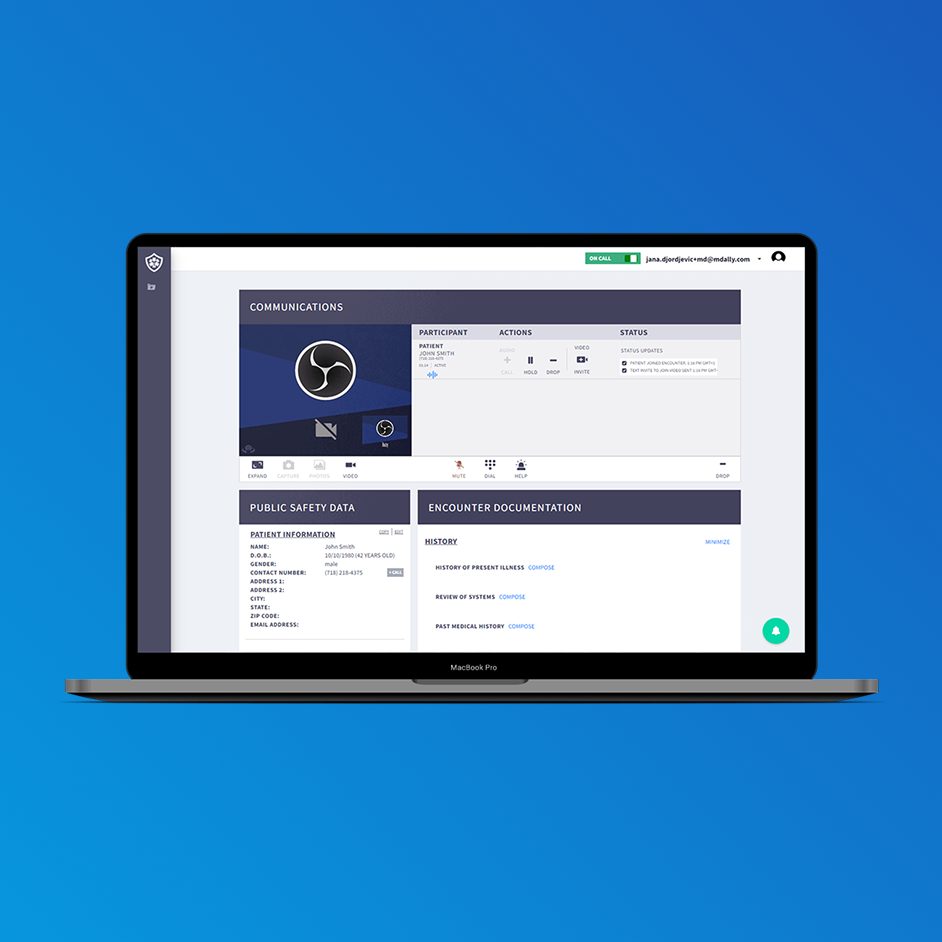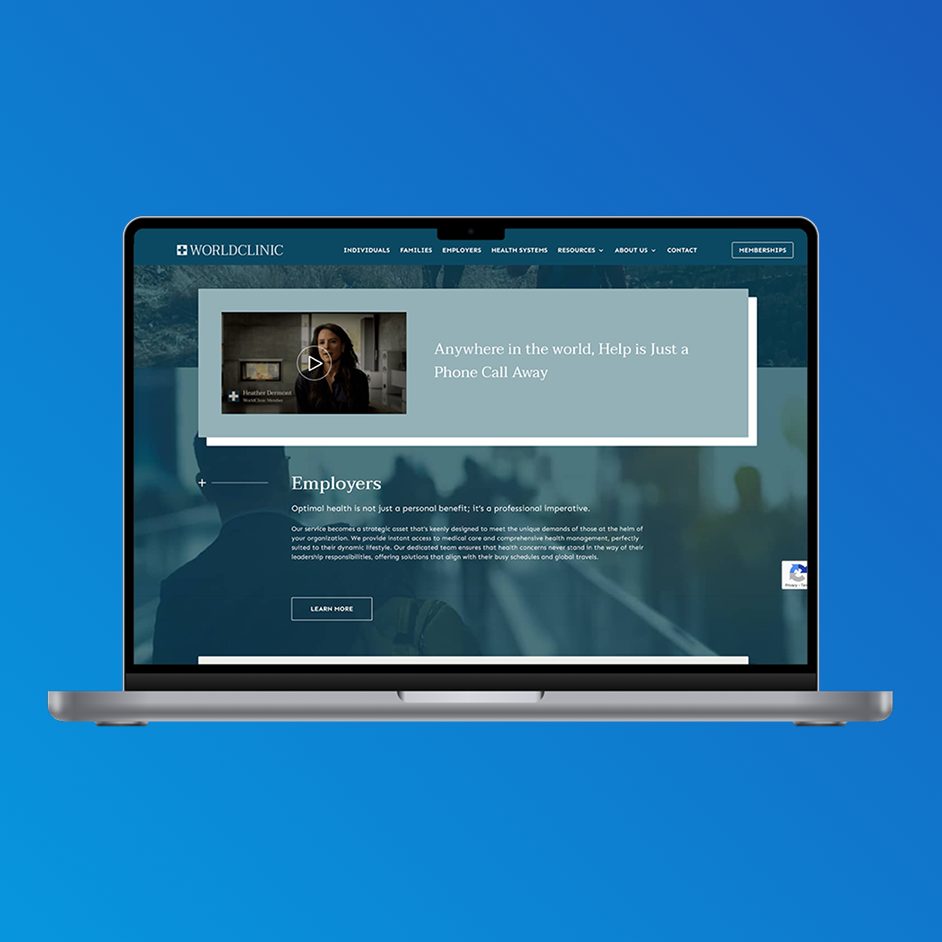
Web Development Services
Let's Grow Your Business with Custom Web Development
Enhanced security, greater flexibility, and a unique user experience—these are just a few of the benefits you can expect by leveraging Scopic's professional web development services. From custom web design to implementing generative AI features, every detail is tailored to your preferences, ultimately helping you achieve and surpass your business goals.
Your One-Stop Shop for Web Development Services
At Scopic, we have expertise spanning web design, front-end, and back-end development across a variety of languages and frameworks. No matter the size, industry, or specific requirements, we're ready to bring your project to life.
Tailored Web Development Services to Meet Your Unique Business Needs
Your project. Your rules. Our expertise.
At Scopic, we work with you to create tailored web solutions that attract and connect with your audience. Our custom web development services include:
Our website development services are customized to fit your specific business goals and needs. Our skilled developers use the latest technologies and best practices to create functional, fully optimized, easy-to-scale websites.
We work closely with our clients every step of the way to create state-of-the-art, user-friendly solutions. After carefully determining your project requirements, we'll kick off the development process by crafting a tailored web development strategy—outlining your business goals, identifying technical requirements, selecting the right technology stack, and mapping out a clear timeline—everything needed to deliver a successful end product that helps you stand out from the competition.
Whether you want to build a simple landing page or a more complex website solution, our software developers are well-equipped to help you establish a strong online presence and bring your business to new heights.
Our team of talented designers creates beautiful custom web designs that resonate with your brand identity. We build functional web designs from scratch, creating the layout, graphic design visuals, and web pages to
But that's not all—we go a step further by ensuring your website or web application delivers a seamless user experience. Our services cover everything from crafting powerful UI/UX designs to ensuring cross-browser compatibility and optimizing performance.
By combining usability with aesthetics, we create unique web solutions that satisfy both you and your customers. Our team specializes in delivering designs that not only look great but also drive engagement and support your business goals.
Leverage our custom web application development services to wow your target audience with industry-specific, niche solutions—built and maintained by experts.
From web portals to CMS solutions and dashboards, we take the time to craft every detail to align with your unique business voice and goals. And since every industry is distinct, our solutions ensure you stay compliant with regulatory requirements specific to your field.
With our web application development services, you'll have a team of professionals working to bring your idea to life. Our team consists of UX/UI designers, DevOps engineers, quality assurance engineers, and specialists in front- and back-end development - all working together to create a successful application that drives growth.
Our hosting and server management services provide businesses with reliable, secure solutions—paired with expert management and ongoing support.
Our services include AWS-powered software development, migration and modernization, cloud management, application hosting, and more—ensuring you unlock the full potential of our solutions.
In addition, our team holds the AWS Select Tier Service Partner badge, demonstrating our commitment to technical expertise and customer success. As an AWS technology partner, we ensure our clients have access to innovative technology, seamless scalability, and cost-efficiency.
Our team of AWS professionals delivers top-notch cloud solutions, empowering you to conquer the cloud.
As a full-service web development company, we deliver ecommerce solutions ranging from responsive mobile apps and marketplaces to analytics and software.
From choosing the right ecommerce platform to creating a user-friendly digital storefront, our team leverages the right technologies and strategies to drive conversions. To achieve the best results, our developers and designers work closely together to deliver a cohesive user experience that aligns with your brand and meets user expectations.
With our custom solutions, you won't be just another online store—you'll stand out as a leader in the digital landscape, driving sales and elevating your brand image.
Our CMS development services help your company easily create, edit, and publish content—offering custom design and development, intuitive content management tools, third-party integrations, responsive design, and performance optimization.
Whether you need to update navigation, modify templates, or create new pages, our custom CMS development solutions ensure you can easily adapt to changes in your industry and stay competitive in the ever-evolving business landscape.
Our website migration services ensure a smooth and secure transfer of your site—including content, design, databases, and SEO—while preserving functionality and minimizing downtime. Every detail is carefully planned and carried out to improve data encryption, legal compliance, and enhance overall site performance.
When you work with us, you reduce the risks associated with poor migration, helping you maintain traffic, preserve search rankings, and ensure long-term growth.
How Scopic Uses AI to Power Advanced Web Development Solutions
At Scopic, we know the importance of leveraging advanced technologies to provide smarter digital experiences. By integrating AI into various aspects of our web development services, we help our clients enhance the overall quality of their web application, improve user satisfaction, and uncover valuable insights that drive smarter decisions.
Our solutions include:
Inclusive Web Accessibility Solutions That Comply & Convert
Developing an accessible website not only helps your company reach a larger audience but is also legally required in many circumstances. As a leading web development services company, we provide various services to ensure your website is accessible to individuals with disabilities.
Accessibility Audits
As part of our web development services, our team evaluates how well your website meets the needs of individuals with disabilities, identifying potential barriers and ensuring compliance with WCAG and ADA.
Remediation Services
Our team will then fix code-level issues to make your digital content accessible and legally compliant, removing barriers that affect people with disabilities.
Design for Accessibility
Our team ensures interfaces meet inclusive design standards by addressing proper color contrast, scalable text sizing, keyboard navigability, responsiveness across different viewport sizes, and more.
Assistive Technology Compatibility
We ensure that your website can be assessed by individuals who use assistive technology, such as screen readers, voice commands, and alternative input devices.
Legal Compliance & Reporting
With compliance a top priority across industries, we'll ensure your company meets ADA, Section 508, and EN 301 549 requirements with proper documentation and reports.
Our Unique Approach to Web Development
Our success as a custom web development company lies in our tried and tested four-step process, perfected on over 1,000 client projects, to help growing businesses like yours reach your business goals

Visioning
First, we get on an exploration call where we talk about your vision for the project.
Planning
Together, we formulate a plan of action, tailored to your business needs
Design
Our web designers will shape your vision into an engaging, user-friendly web experience that your visitors will love.
Development
Our development team starts building your web solution and keeps you posted with regular progress reports and milestone deliverables, so you have full visibility and control over the implementation process.
Why Choose Scopic as Your Custom Web Development Service Partner?
Our team is trusted by companies in healthcare, IT, education, e-commerce, and more, demonstrating our commitment to delivering tailored solutions and lasting value across industries.




AI-Optimized Backend Development
Our AI expertise powers backend solutions that are faster, smarter, and built to scale.
Fast Turnaround
Our streamlined development processes reduce time to market—without sacrificing quality.
UX-Focused Design
Our designers create user-friendly interfaces that drive increased customer satisfaction.
Worldwide Talent
Our team comes from all corners of the world, bringing diverse backgrounds and skill sets that elevate our solutions.
20 Years of Experience
We bring 20 years of proven expertise to every project we undertake, delivering tailored solutions that drive lasting success.
Hear it from Our Clients
There’s nothing quite as rewarding as knowing our solutions make a significant impact.
Our Projects
Companies across diverse industries leverage our custom web development services to enhance efficiency and gain a competitive edge. Some of our favorite projects include:
Frequently Asked Questions
Custom web development and design involve creating a unique, customized web solution for your business. Every functionality and feature of the web solution can be tailored to suit your specific business goals and needs.
Such projects are created from the ground up and involve a variety of tasks like front and back-end development, graphic design, and UX design.
A custom-made website solution ensures a unique online experience for your audience. Meanwhile, it helps you stand out from your competitors as it allows for a more personalized approach to web development.
To create a tailored website, the developers usually start working on the project from scratch as opposed to using pre-made templates. The end result? You get a one-of-a-kind website that serves all your needs and requirements.
At Scopic, we create custom web solutions that:
- - Transform your ideas into digital reality.
- - Enhance user experience.
- - Expand your outreach and ensure new customers can find you easily.
- - Use cloud computing solutions to scale fast.
- - Help you transform your website into a beautifully designed iOS or Android app at affordable rates.
By using a reliable custom web application development service, you can add many more functionalities and features to make your solution as unique and convenient as possible.
For example, at Scopic, we offer:
- - Innovative web app development Our progressive apps use the best of both worlds since they're built with web technologies but have the look and feel of mobile apps.
- - Integration with third-party services: We can help you integrate powerful APIs like payment providers, custom maps, and communication channels.
- - E-commerce development: Looking to boost your sales? Our e-commerce developers can help you.
- - Web portals: Through our web portals, your business can easily connect with customers and manage its online presence.
- - Audio and video streaming apps: We also develop advanced 3D visuals, interactive content, and streaming applications, so you can deliver the best multimedia experience to your customers.
- - Content management systems: Need to integrate a CMS with your website for easier management? No problem! Our experts can integrate WordPress, Joomla, and other popular platforms as well as build a custom CMS solution for you.
The cost of web development services can vary widely depending on the nature of the project, its complexity, the expertise of the developers, and where they’re based (an offshore company would usually offer high-quality services at a lower price).
On average, smaller and simpler projects can cost a few thousand, while larger and more complex websites can cost tens or even hundreds of thousands of dollars. To understand the exact cost, it’s best to get a detailed quote from your service provider before you start the project.
Yes, Scopic offers A to Z web development services, including website hosting and domain registration. By securing you with reliable hosting solutions and the perfect domain name, we do everything to streamline the process of getting your website live.
Absolutely. At Scopic, we have extensive experience in a wide range of industries and businesses of all sizes and complexities. From creating a simple landing page all the way to developing enterprise solutions, we have the expertise to deliver high-quality solutions that are tailored to your specific business needs.
Creating a mobile-friendly and responsive website for you is one of our biggest priorities. In this digital age of smartphones, we make it our mission to deliver top-notch UX for all devices.
Scopic is home to experienced SEO and marketing specialists who are skilled in optimizing your website for search engines, improving your rankings, and helping your website reach its perfect audience. Our web development services go hand in hand with our professional SEO solutions
As a remote company, communication is key in our process of collaboration with all clients. We put clear and transparent communication under the spotlight and use a wide range of channels to keep in touch, including email, video conferencing, and other project management tools. Rest assured that you will be updated and involved every step of the way.
Yes, we deliver a range of content management systems, including WordPress, Shopify, and more. Thanks to our strong team of web developers, we have the ability to build a custom CMS for you as well. Ultimately, our goal is to give you flexibility and ease of use when it comes to managing your website's content.
Whether you're looking to migrate your website to a new platform or to redesign your existing site, Scopic can be your trusted partner guiding you every step of the way. You can expect a smooth transition and strategic redesign that will enhance your site's look, feel, and performance.
If you're skilled in CMS platforms like WordPress or Shopify, you will easily be able to update the contents of your website on your own. We can also provide support and ongoing maintenance to ensure your website stays up to date at all times.
Platforms like Fiverr and Upwork offer access to talented freelancers who are ideal for one-off tasks. However, when it comes to building a full-scale website or a custom web application that supports your long-term business goals, working with a professional web development company provides distinct advantages.
At Scopic, you get a multidisciplinary team — developers, designers, project managers, and QA engineers — all working cohesively to deliver a robust, scalable, and future-ready web solution. We ensure consistent communication, formal quality assurance, legal accountability, and ongoing support that freelancers on gig platforms typically can’t match.
While freelancers might complete a task, a custom web development agency becomes a strategic partner invested in your success, helping you scale and innovate as your business grows.

Start innovating with Scopic – Your Trusted Custom Web Development Company.
Need help with your in-house development? Looking to build something new from the ground up? Searching for support maintaining an existing application?
Scopic is here to help!





